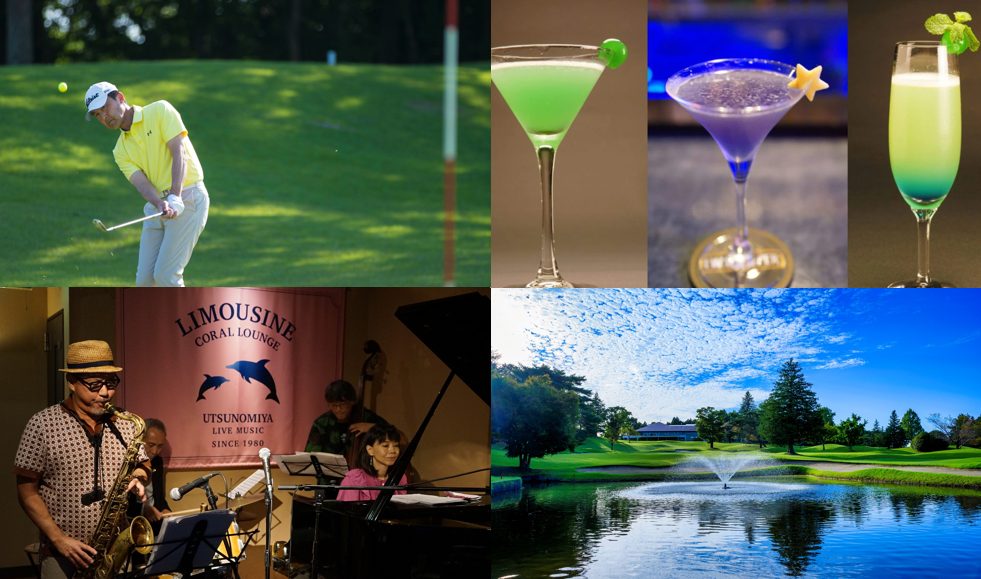MURASAKIZUKA GOLF CLUB
See & Do-01-1152x864.jpg)
We use cookies on this site to enhance your user experience. If you continue to browse, you accept the use of cookies on our site. See our cookis policy for more information.

Established in 1849, Shimazaki Sake Brewery is open for tours of the brewery and the history of the brewing process (prior bookings required). Along with a selection of local Sake, you can purchase other liqueurs made from Yuzu, strawberries or Ume plums and Sake ice cream made with Ginjo-shu. The “Sakagura Festival” held at the brewery in March offers sake-tasting, quizzes, prize draws and sales of limited edition Sake bottles.
The bars in Utsunomiya are run by highly skilled bartenders who have won prizes at cocktail competitions in Japan and overseas. Enjoy a special cocktail available for a limited time using the strawberries of Tochigi Prefecture which has had the largest output volume of this fruit in Japan for over half a century.
Savor the colors, flavors and aromas in Utsunomiya at night. Please enjoy Utsunomiya – city of cocktails.☆
The old mining site of Utsunomiya’s famous,Oya Stone,has now been turned into a historical museum. The exhibition features the long history of the mining since the 17th century,with many materials on display. The underground cavern,covering 20,000 sq. metres,is large enough to fit a baseball field.
With a fantastic atmosphere reminding visitors of the ruins of Ancient Rome.It is used in various scenes such as movie shooting, music videos shooting, weddings, concert, etc. due to its mysterious scenery.
The beginning of Ooyaji Temple
Nearby the Utsunomiya City, the Ooyaji Temple has been built surrounded by a cavern. Within the temple are 10 stone carvings of buddha carved directly into the cavern wall including Japan’s oldest statue of the goddess Kannon (the Oya thousand-armed Kannon).
It is said that long time ago, a venomous snake was living in the Oya area and every creatures were killed by its poison. In A.D. 810, a famous monk Kukai Daishi heard this story and stayed at this area for a few days. When he left, he told people that the snake would never come back again. People found that there was a Senju Kannon (also known as Ooya Kannon) carved into the cavern, and built this temple for thanking Kukai Daishi.
Symbol of Japan’s Silk Road, the Ooya Kannon
In recent study, scholars had found some similarities between Ooya Kannon and the Buddhas of Bamiyan. It is believed to be Japan’s Silk Road heritage carved by Afghan monks.
When you visit, please join your hands in prayer for world peace and happiness for people while reflecting on Kannon’s great heart.
THE STANDARD BAKERS Oya-Honten is a spacious bakery and restaurant built by drastically remodeling a former roadside restaurant which used to be a symbol of the Oya area. The baker who has experience in working at an authentic bakery produces unique bread. The restaurant chef, who makes a wide variety of food, uses wonderful ingredients that Tochigi proudly offers to cook and serve French- and Italian-based dishes. Bread is made with carefully selected ingredients including wheat flour and rye flour from France and Hokkaido mixed in a good balance. To pursue originality in bread, the bakery uses homemade yeast, as well as baking methods and ingredient balances developed in-house whenever possible.
Yatai-no-Machi Central Park is home to the Yatai Museum, Tourism and Local Products Centre and “Kikusuien”, one of three famous gardens in Kanuma. The Yatai Museum’s exhibits include three hand-carved wooden floats – official local cultural properties – and videos on the Kanuma Autumn Festival which is designated an Important Folk Cultural Property. Take a close look at elaborate carvings on the floats and learn about the history of this famous festival.
Built in the early 1900s, “Kikusuien” was known as one of three outstanding gardens in Kanuma at that time. Many cultural elites such as Sumio Kawakami (a printmaker) visited and loved this Japanese garden. Nowadays many people come to the restored garden for its fantastic autumn leaves in late November.
The Tourism and Local Products Centre is a hub for tourism offering a selection of brochures about destinations in Kanuma in addition to a wide range of local products. At the Konjac café, visitors can enjoy a variety of dishes hand made from the local all-natural Konjac potatoes.
Experience the traditional wood-making craft of Kumiko in Kanuma. Kanuma Kumiko, designs made with strips of wood, is found in a traditional Japanese room. Because no nails are used in assembling the 1-5mm strips of wood which make up various designs, it requires traditional and very delicate skills. Visitors can try their hand at making coasters while learning about the techniques and designs of Kanuma Kumiko used mainly for Shoji (traditional Japanese screens and sliding doors) and interior furnitures.
Furumine Shrine was built to worship the legendary hero Yamato Takeru 1,300 years ago. The shrine is where the monk Shodo Shonin, founder of the temples in Nikko, was trained. The shrine is also known for the enshrined Tengu, a messenger from the gods who protects people from bad luck. People come here to pray for good luck, fire protection, safe voyage, rich harvests, traffic safety, business success and family health as the god is believed to make all these wishes come true.